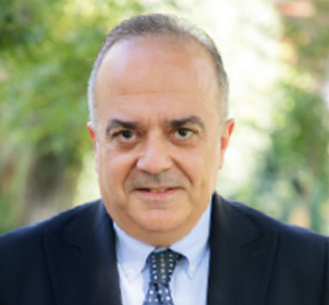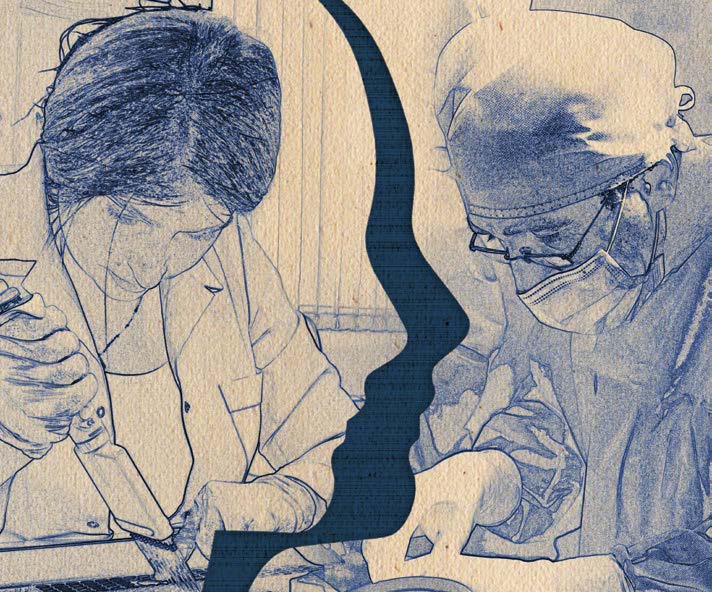
At all turning points in history, when the political and economic wheel passed from the previous class to a new, more developed class, there was a cultural upsurge. In Armenia, too, various transitional stages were accompanied by the awakening and development of the cultural, scientific and educational spheres.
Even after the tragic events of 1915 of the last century, Armenia, having gained independence, gradually rose to its feet. Centuries later, the rebuilt nation state created opportunities for the development of science, art, culture and medicine.
A great contribution to the development of Armenian scientific medicine was made by Armenian scientists and doctors who received their education and began their professional careers in Europe and the Russian Empire. They also initiated a medical publishing, including the ones in the Armenian language.
Armenian medical literature has always had its readers and was published in different countries of the world. According to various sources, at the beginning of the last century, about 30 Armenian medical journals with a fairly wide geography of publication were published, from Constantinople (about 14 journals) to Boston, from Cairo and Alexandria, to Varna and Thessaloniki, from Paris to Tbilisi and to Baku and etc. Famous Armenian patriotic doctors L. Tigranyan, V. Artsruni and others were among the founders of medical publications.
The spheres of industry, culture, education and science developed rapidly in Soviet Armenia, and medicine was no exception.
In the field of scientific medicine, the number of scientific journals, published works has increased, scientific research institutes, city and district medical institutions have opened and began their activity. The Medical University was founded in Yerevan, and in 1963 the Institute for Advanced Training of Doctors was founded, which became the first forge of continuous education for medical personnel. Over the years, dozens of scientific journals and publications have been published. During this period, 156 medical books were published, including 59 textbooks for students from medical universities, 9 textbooks for students of medical technical schools, 28 medical journals, 60 scientific-methodological and other works. It is noteworthy that 10 of the mentioned publications were published in Russian, and the rest – in Armenian.
Thus, professional literature in Armenian became available to medical specialists in Soviet Armenia.
Social changes in Soviet Armenia were followed by a new period of formation – the birth of the third republic of Armenia. This period was accompanied by numerous legislative, economic, scientific and educational reforms. During this period, too, Armenia took the first independent steps along the path of formation. The generation of independence faced not only the challenges of state-building, but also the need to keep pace with the rapid technological development.
Both Armenia, full of new hopes for the future, and the whole world faced serious challenges – epidemics, emergency situations. It became clear that advanced technology allows people to work together and at the same time on the way to solve similar problems, quickly spreading the gained experience and having a new spatial perception.
The international medical community, at the forefront of confronting these challenges, has undoubtedly mobilized and reevaluated its capabilities. This has become a new impetus for new technological solutions in medicine, an increase in scientific research and in the development of new directions. Having adapted to the new reality, humanity will certainly reap the fruits of this evolutionary period.
Today, digitalization and technology development processes have an impact on the formation and development of various areas in the field of scientific medicine. These processes have simplified and accelerated the collection and analysis of health statistics, increased the digitization of libraries and made evidence-based medical literature available, and e-learning platforms and distance learning programs have made it possible to study at respected universities regardless of student geography.
Attaching paramount importance and recognizing the importance of developing continuing education for medical workers and medical science in Armenia in the process of creating quality personnel, the National Institute of Health (NIH), striving to integrate into the processes of international medical scientific partnership, continues to support the development and enhancement of the potential of medical science.
On this path, it is important to have huge choice for the proper presentation of works in the field of scientific medicine in Armenia, platforms that provide an appropriate level, in particular, scientific journals. To this end, the National Institute of Health has established a new “Armenian Journal of Health & Medical Sciences” (AJHMS), which will become the official scientific periodical of the NIH. The purpose of the creation of the Journal is to have a printed platform on the pages of which significant scientific, medical and healthcare works and projects from the field of healthcare and scientific medicine in Armenia will be presented. It will reflect not only the scientific activities of the departments of the NIN, but also the Armenian and foreign scientific medical thought. The editorial board of this Journal, which lives by science, will undoubtedly give a new breath to the scientific life of the NIH. The editorial board of the Journal is a team of enthusiastic specialists represented by the chief co-editors Samson Khachatryan, head of the Neurology department of the NIH and Davit Abrahamyan, associate professor of the Department of plastic and reconstructive surgery at the NIH. These specialists personify a generational change in the scientific potential of the NIH; have publishing and editing experience in a number of reputable international peer-reviewed journals.
I also hope that the Journal will become a logical continuation of the work carried out for decades by the former Institute for Advanced Training of Doctors and then by the National Institute of Health, aimed at developing our educational and scientific thought, and internationalizing of the Armenian scientific medicine.
Alexander Bazarchyan
Director of the National Institute of Health of the Ministry of Health of the RA

